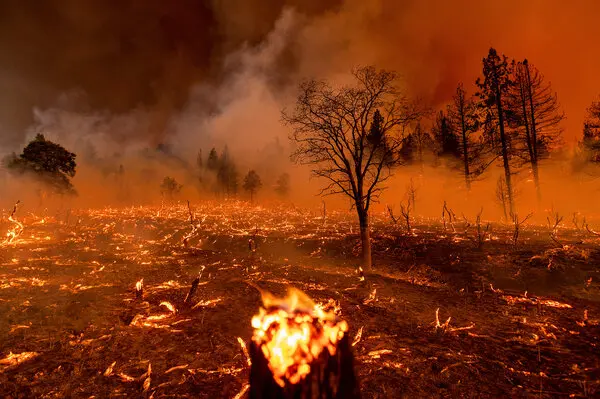Introduction
Discover the causes, effects, and prevention of wildfires. Learn how climate change and human activity fuel these destructive fires and what can be done to protect our planet.
Wildfires are among the most devastating natural disasters on Earth. These uncontrolled fires spread rapidly through forests, grasslands, and savannas, destroying everything in their path. While some wildfires occur naturally, most are caused by human activities. Understanding their causes, effects, and prevention methods is essential to protecting both nature and human life.
Causes of Wildfires Spread
Wildfires can begin from natural or human-made sources.
Natural Causes
- Lightning Strikes: A major natural cause of wildfires, capable of igniting dry trees and grasses.
- Volcanic Eruptions: Hot lava and ash can set vegetation ablaze.
- Spontaneous Combustion: Under intense heat, dry organic material can catch fire without an external flame.
Human Causes
- Unattended Campfires: Fires left burning in the open can easily spread to nearby forests.
- Discarded Cigarettes: This is One of the leading human causes of wildfires worldwide.
- Land Clearing and Agricultural Burns: Poorly controlled fires often escape into wild areas.
- Power Line Sparks or Arson: Electrical faults and deliberate fire-setting are common triggers.
Conditions That Worsen Wildfires Spread
Certain environmental factors can turn a small spark into a raging inferno:
- Drought and Dry Weather: Vegetation becomes tinder-dry and extremely flammable.
- High Temperatures: Heat accelerates combustion and helps fires spread.
- Strong Winds: Winds carry embers long distances, igniting new fires.
Low Humidity: Dries out leaves and soil, increasing fire risk.
Effects of Wildfires Spread
Environmental Impacts
- Loss of Biodiversity: Wildfires destroy habitats and kill countless species.
- Air Pollution: Smoke releases harmful gases like carbon monoxide and carbon dioxide.
- Climate Change: Wildfires release massive amounts of greenhouse gases.
- Soil Erosion: After vegetation burns, rainfall can easily wash away topsoil.
Human and Economic Impacts
- Property Damage: Homes, infrastructure, and farmlands are often lost.
- Health Issues: Smoke inhalation can lead to respiratory illnesses.
- Economic Loss: Billions are spent on firefighting and rehabilitation each year.
Prevention and Control of Wildfires Spread
To minimize the impact of wildfires, both individuals and governments must take preventive action:
- Fire Bans: Restricting open fires during dry seasons.
- Controlled Burns: Safely removing excess dry vegetation.
- Early Detection Systems: Satellites and drones can help detect fires early.
- Public Awareness: Educating communities on fire safety and preparedness.
- Firebreaks: Clearing strips of land to stop fire spread.
- Rapid Response Teams: Firefighters equipped with advanced technology for quick containment.
Post-Fire Recovery
After a wildfire, recovery efforts include:
- Reforestation: Planting new trees to restore forests.
- Soil Stabilization: Preventing erosion and flooding.
- Wildlife Rescue: Protecting surviving animals and rebuilding habitats.
- Community Support: Rebuilding homes and providing emotional and financial aid to victims.
Conclusion
Wildfires are natural forces that play a role in regenerating ecosystems, but their increasing frequency and severity driven by climate change and human negligence pose a serious global threat. Prevention, early detection, and community education are vital in reducing wildfire risks and protecting our environment for future generations.


